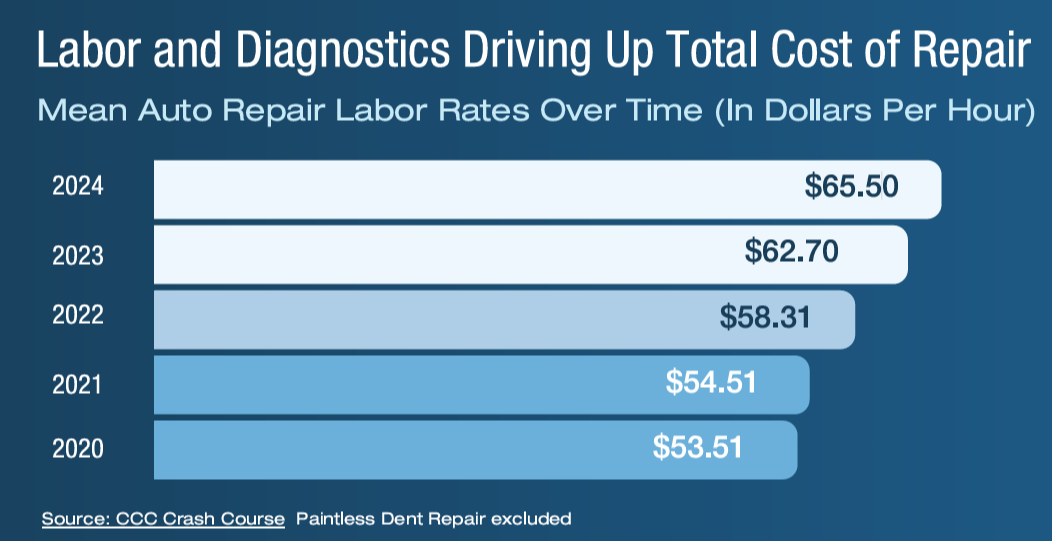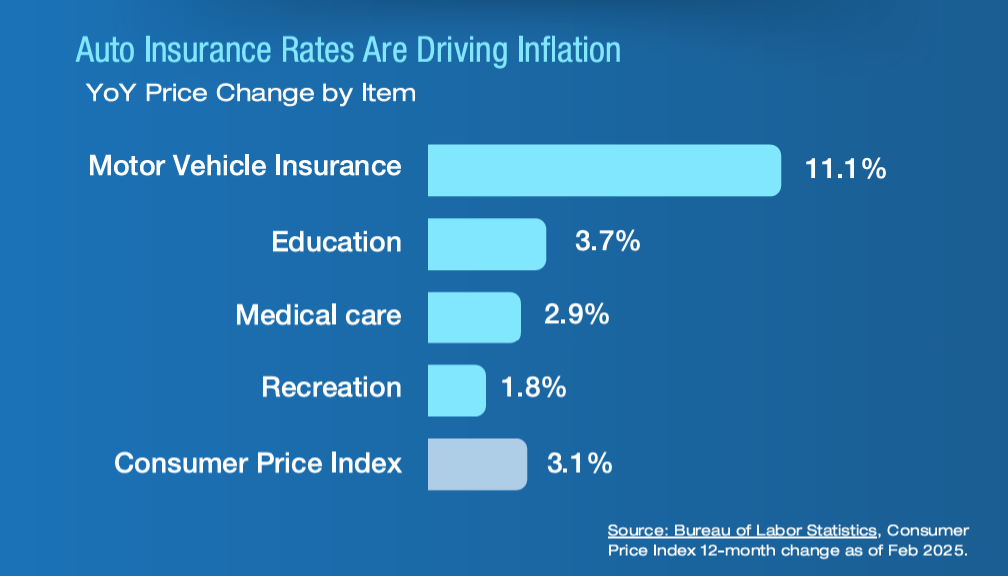
Report looks at why repair costs are up, notes necessity of ADAS recalibration
By onCollision Repair | Repair Operations
According to SambaSafety, a cloud-based driver risk management solutions company, the average number of replacement parts involved in a repair job has grown 15% over the past five years, adding up to half of the total repair cost.
Its “2025 Driver Risk Report: Current Trends Shaping Roadway Safety” notes that vehicles are being manufactured with new, lighter-weight parts that can require more frequent replacement, and repair times are longer and require “ever more specialized” mechanical labor than in the past.
According to the report, the greatest contributing factors to the total cost of repair have been labor and miscellaneous costs, including diagnostics. SambaSafety notes that even minor collisions necessitate the recalibration of sensors and camera systems.
Tariffs are also expected to compound increasing costs, as more than $84 billion in auto parts are imported annually, the report states.
The report relies on SambaSafety’s network of more than 100 telematics integrations and court, motor vehicle, and CSA data to show how behavioral trends and distinctions between age groups, fleet sizes, and industry segments lead to crashes and claims.
SambaSafety found that speeding continues on an upward trend, and distracted driving continues to increase crash severity.
Speeding has long comprised the largest proportion of all violation categories, according to the report. Following steady annual increases, speeding is now approaching 40% of major license violations. Speeding increases the likelihood of a future crash by 47%.
The Southeast region had the second-highest violation rate in the U.S., at 30.3%, and was the only region with an increase in violations over the prior year.
South Carolina increased nearly 4 percentage points over the prior year and had the highest violation rate nationwide at 50.3%.
The report notes that a higher violation rate doesn’t necessarily mean drivers are riskier in a certain state or region, or that the area is less safe, because violation rates can be influenced by disparity in enforcement measures, affecting the frequency and types of violations issued in each area.
Thirteen percent of all police-related crashes are affected by distracted driving. When surveyed, nearly 40% of Americans reported reading texts or emails while driving in the last 30 days. Another 19% said they are continuously distracted and reported being on the road more often than less distracted respondents, according to the report.
“Risk isn’t random — it’s behavioral, and overwhelmingly, predictable,” said Matt Scheuing, chief executive officer at SambaSafety, in a press release. “The volatility in commercial auto insurance reflects the systemic risk that builds when unsafe behaviors go unaddressed. That’s why the opportunity for real improvement starts upstream, with better visibility, targeted intervention, and sustained behavior change.”
In February, the Bureau of Labor Statistics reported that auto insurance rose 11.1% year-over-year — a statistic that SambaSafety says is due to vehicle complexity increasing costs, nuclear verdicts, dangerous driving behaviors, higher crash severity, and medical inflation.
“As insurers seek to regain underwriting profitability, costs to consumers and businesses continue to rise,” the report states. “The growing complexity of new vehicles — most of which are now sold with advanced driver assistance systems (ADAS) — is a major factor in the steep repair costs contributing to this problem.”
The report quotes Collision Advice’s Mike Anderson, who shares an example of ADAS increasing repair costs.
“ADAS has redefined repairability, and what used to be a simple bumper repair now triggers costly calibrations and diagnostic repairs,” he said. “This has increased the average severity between $300 and $800 more per claim on newer vehicle models.”
“It is clear that safety is not an accident,” said Matt Scheuing, SambaSafety CEO, in the report. “Successful companies approach it from the human angle, recognizing that investments in safety lead to better outcomes. That starts with proven risk management tools, clear accountability, and actionable insights.
“[F]ocusing on the precious few can make a meaningful difference in a short amount of time. Several clear indicators of risk emerged in the report: speeding, distraction, and suspended licenses. All have a sizable impact on outcomes, yet are relatively easy to address with sensible and pragmatic solutions. With the right insight, we can turn challenges into progress and ensure that safety remains top of mind for everyone on the road.”
The report also looks at the impact of trends on different aspects of driver risk management, including hiring and retention trends in certain fields and transportation industry regulatory compliance.
Images
Featured image credit: lezzo/iStock
Graphs provided by SambaSafety


